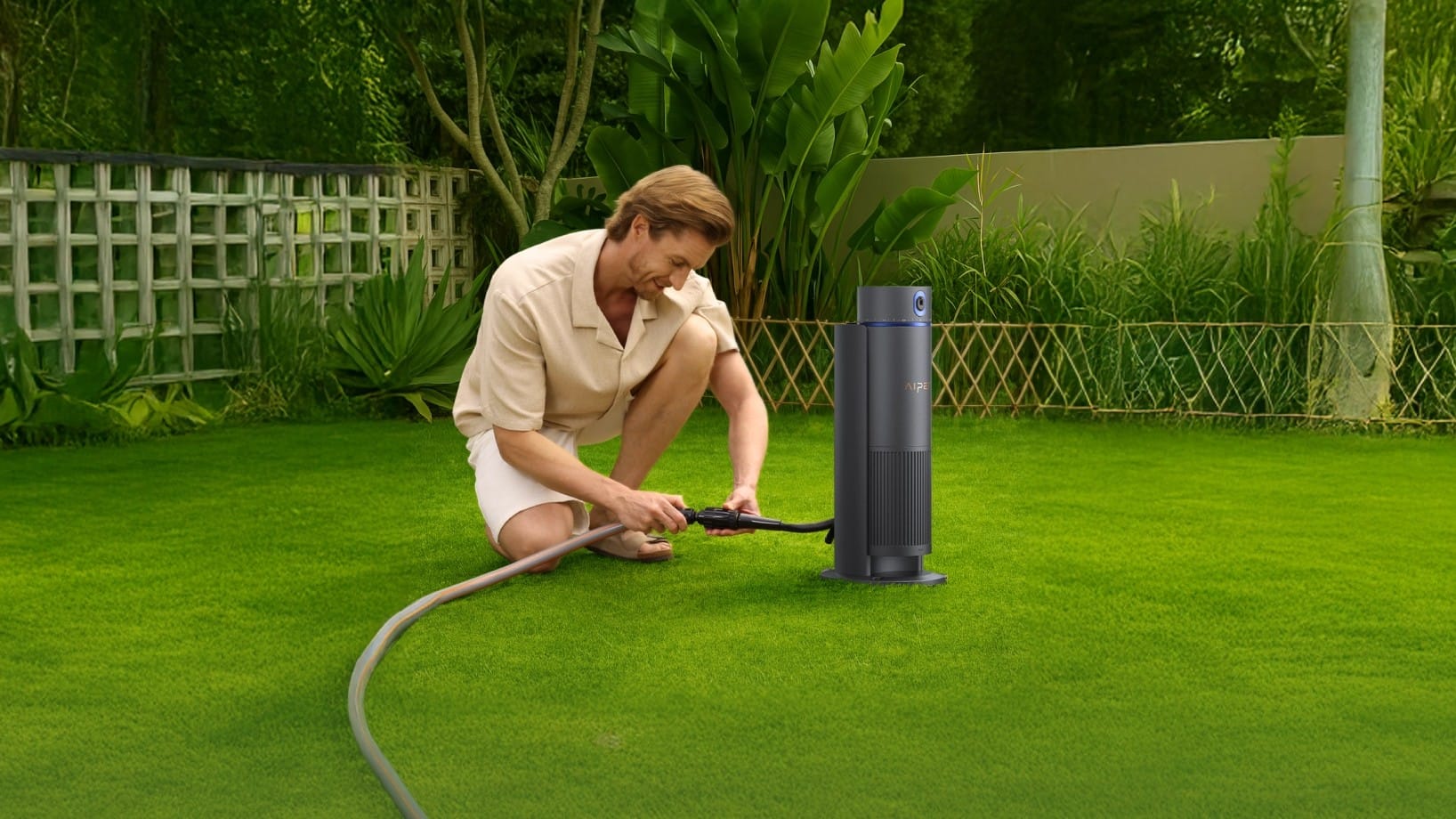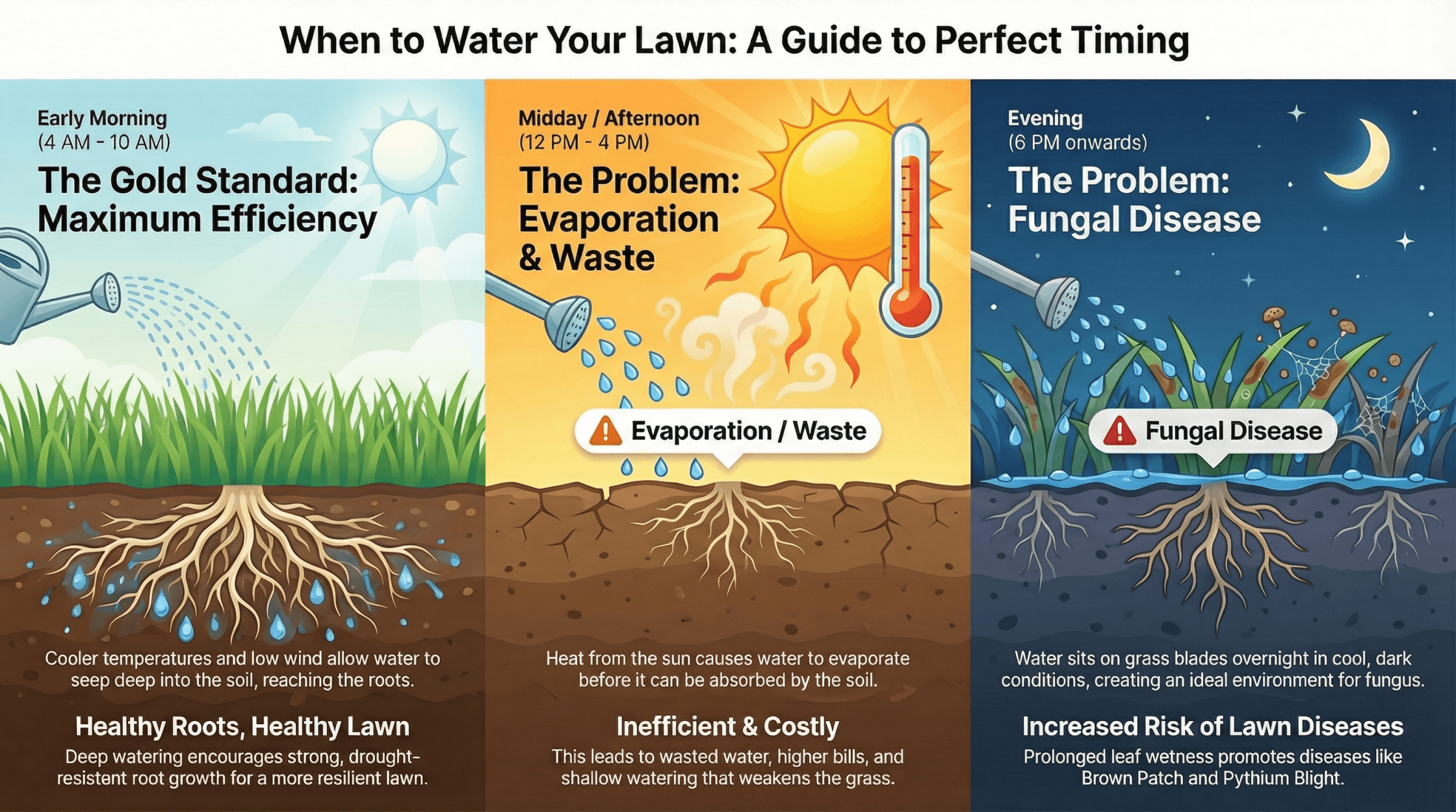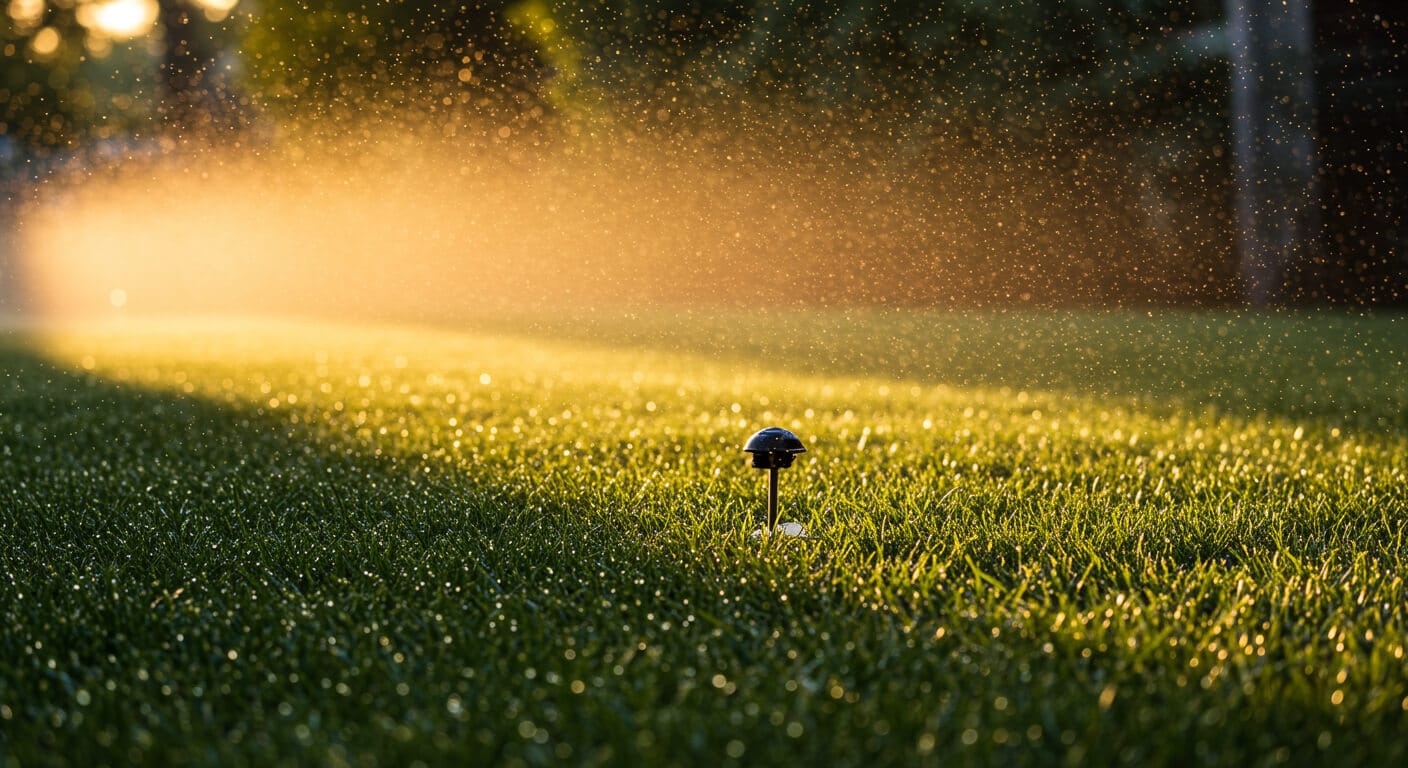Best Time to Water Grass: The Ultimate Guide to a Healthy Lawn

Keeping a lawn green shouldn’t feel like a guessing game. Many homeowners consistently water their lawns yet still end up with brown patches, rising water bills, or grass that never looks truly healthy. Suppose you’ve been wondering why, it often comes down to timing. Choosing the best time to water grass can dramatically improve how well your lawn absorbs moisture and how much money you save.
Let’s skip the guesswork: The best time to water grass is between 4:00 AM and 10:00 AM.
This early-morning window offers cooler temperatures, calmer winds, and better soil absorption before the day heats up. In this guide, we’ll break down the science behind morning watering, why evenings raise the risk of lawn diseases, and how the Tuna Can Test can help you water more efficiently.

Why Morning (4 AM – 10 AM) Is the Gold Standard
Early morning isn’t a simple “good idea.” It’s grounded in science.
Temperatures are at their lowest before sunrise. Humidity is naturally higher during this time, meaning less water evaporates. Because the sun isn’t strong yet, the water you apply has time to seep deep into the soil—right where the roots need it.
Sprinkler efficiency also peaks in the morning. According to the EPA WaterSense program, up to 50% of outdoor water is wasted due to wind, evaporation, and runoff from inefficient irrigation methods. Watering at noon is one of the top causes of that waste.
Wind is another hidden factor. Early in the morning, wind speeds tend to be gentler. That prevents sprinkler mist from drifting onto sidewalks or driveways and ensures more of your water reaches the lawn.
For those with an automatic sprinkler timer, watering before 6:00 AM is ideal. At this hour, your lawn experiences its highest soil infiltration rate, meaning more water reaches the root zone. With less heat and less wind, you avoid unnecessary loss and get the greatest return on every drop.

The Danger Zones: When to Avoid Watering
A. The Afternoon (12:00 PM – 4:00 PM)
The enemy here is evaporation.
Many people believe that watering in the sun “burns” grass because droplets act like magnifying glasses, which is a myth. Your real problem is waste: the hotter the day, the faster water evaporates before reaching the roots.
That means:
- More water needed for the same results
- Higher bills
- Shallower watering
Noon watering is simply inefficient.
B. The Evening (6:00 PM – Midnight)
The enemy here is fungal disease.
After sunset, there’s no sunlight to dry grass blades. Water sits on the surface for hours, creating the perfect environment for lawn diseases.
Experts from university agriculture extensions, such as Clemson University, warn that prolonged leaf wetness in the evening increases the risk of fungal problems like brown patch and pythium blight.
If evening watering is unavoidable, schedule it between 4:00 PM and 6:00 PM. This early-evening window allows the blades to dry out before dark, helping you avoid the conditions that encourage fungal growth.
Quick Comparison: Morning vs. Noon vs. Night
| Time of Day | Evaporation Risk | Disease Risk | Water Efficiency |
|---|---|---|---|
| Morning (4–10 AM) | Low | Low | High (Best) |
| Afternoon (12–4 PM) | High (Wasteful) | Low | Low |
| Evening (6 PM+) | Moderate | High (Fungus) | Moderate |
Actionable Strategies for a Lush Lawn
One of the most common watering mistakes is frequency.
Instead of watering lightly every day, focus on deep and infrequent watering. This encourages grass roots to grow deeper in search of moisture, which builds a stronger, drought-resistant lawn.
Aim for 1 to 1.5 inches of total water per week, including rainfall.
How to Perform the “Tuna Can Test”
This simple test helps you measure your sprinkler output.
- Place empty tuna cans or similar shallow containers across your lawn.
- Run your sprinklers for 15 minutes.
- Measure the water depth inside the cans.
- Calculate how long your sprinklers take to reach 1 inch.
Example: If 15 minutes gives you 0.5 inch, you need 30 minutes per watering session.
To make scheduling easier, consider using programmable hose timers, smart sprinkler controllers, or Wi-Fi–enabled irrigation systems. These tools automate your watering routine and make hitting the 4:00 AM target effortless.
Special Case: New Grass Seeds vs. Established Lawns
Established lawns thrive with deep, infrequent watering, but new grass has very different needs. The “deep and infrequent” rule applies only once a lawn is fully established. Freshly seeded areas must stay constantly moist for the seeds to germinate and begin putting out healthy roots.
To maintain that steady moisture level, water lightly 2 to 3 times a day during the first few weeks. The best time to water grass is morning, noon, and early afternoon, when temperatures support quick absorption without leaving the grass wet overnight. Keep each session short—about 5–10 minutes—to avoid puddling or washing seeds away.
After about 3–4 weeks, once the new grass has taken root and started growing upright, begin transitioning away from frequent watering. Gradually reduce the number of daily sessions and shift toward the standard early-morning schedule, helping the young lawn adapt to deeper, more efficient watering as it matures.
FAQs About the Best Time to Water Grass
Q: How long should I water my grass?
Most lawns need 20–30 minutes per zone, but your exact time depends on your sprinklers. Refer to the Tuna Can Test for accuracy.
Q: Is it bad to water grass in the sun?
It won’t burn your lawn, but it will burn your wallet. Midday watering evaporates quickly, wasting water and money.
Q: Can I water the grass every day?
Not for established lawns. Daily watering creates shallow roots and fragile grass that struggles during heatwaves. The only exception is newly seeded areas.
Conclusion
A healthy lawn starts with smart watering habits. Remember the three essentials:
- Water in the morning (4–10 AM) for the best absorption.
- Avoid watering at night when disease risk is highest.
- Water deeply and infrequently so roots grow strong.
Smart home living includes more competent lawn care, not only smart devices inside your home. Take a moment today to adjust your sprinkler timer and make sure your lawn is watered at the most effective hour. Your grass (and your water bill) will thank you.

